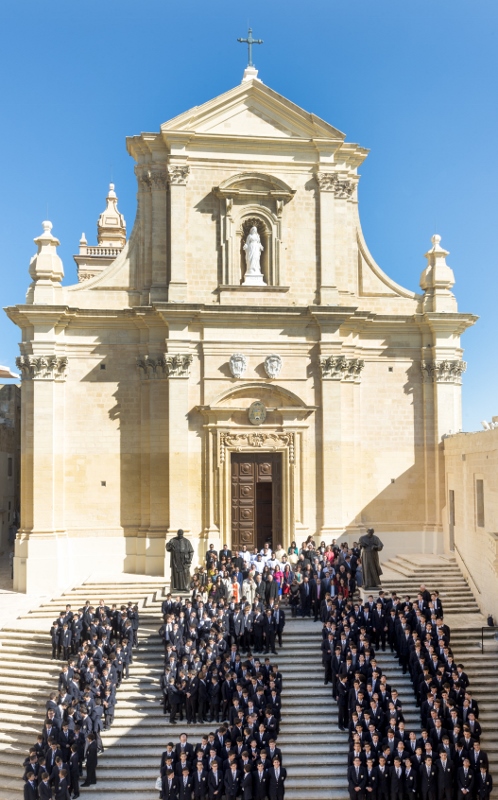A short historical outline of the Sacred Heart Seminary Secondary School
The history of the Seminary Secondary School of Victoria, Gozo parallels that of the Sacred Heart Major Seminary, the place, which has always been synonymous with the candidates for priesthood and the preparation of such noble ministry in Gozo, since 1866. Such year is also notified for its foundation just a couple of years after the erection of the new diocese of Gozo by Blessed Pope Pius IX.
The Gozo Seminary opened its doors on the 4th of November 1866, under the episcopate of Fra Paolo Micallef, an Augustinian monk who was made Apostolic Administrator to the island by Pope Pius. The mastermind behind the whole project however, was the Gozitan born patriot Mgr. Pietro Pace who at the time, was serving as the Vicar General of the newly-erected diocese. Mgr. Pace had also collaborated with an equal Gozitan patriot – the renowned Sir Adrian Dingli, in order to have Gozo as independent diocese (cf. Joseph Bezzina, The Sacred Heart Seminary. The Heart of Gozo, Gaulitana 11; Gozo, 1991, page 18).
The first batch of seminarians numbered around a hundred. Most of them were boarders and these were divided into three sections: the so called grandi, the mezzani and the piccoli. The latter ones would be considered the equivalent of the Secondary schools’ students of the Modern age. Later on, the Seminary embraced another section of students known as the piccolini but these would merely receive Primary education. The Secondary school students could be divided into the upper and lower forms. The lower forms students would study, among other subjects – Greek, Biology and Zoology in their basic forms as well as Geometry. The upper forms or classi liceali would then specialise in three fields (cf. Ibidem).
The Gozo Seminary was one of the prominent places known for their holistic education before the turn of the century. It features in the history of the impact of the Risorgimento on the Maltese islands. The Sicilian Jesuits who ran the Gozo Seminary from 1866 to 1909 attracted a number of youths from Sicilian noble families. Arturo Mercieca spoke highly of their academic qualities but he did not mention any political prejudice they may have had against the newly-unified Italy, even though he mentions the fact that they found refuge in Gozo after Garibaldi’s invasion (cf. Joseph M. Brincat, Maltese And Other Languages. A Linguistic History Midsea; Malta, 2001, page 344). This augurs well for the balanced stance that Gozo Seminary and the diocese as a whole adapted in the bellicose language controversy that characterised our late nineteenth-century political and social history.
As we enter into the second decade of the twenty-first century, the Sacred Heart Seminary Secondary School looks into the future with a strong sense of hope and determination. This year, 2016, marks the 150 years of its foundation.

During these years, a good number of renowned personalities developed their Secondary Education, prior furthering their education on the mainland and later on, on the continent. Familiar names of former students include: Anton Buttigieg and Censu Tabone, who later became president of the Republic of Malta, future Prime Minister Enrico Mizzi, (son of Fortunato the Pater Patriae, the erudite polymath) and the accomplished musician Mgr. Giuseppe Farrugia Tal-Vers who later on served for two terms as rector of the Major Seminary and became Vicar General of the diocese, as well as many others.
As the one and only boys’ Secondary Church school on Gozo, the school is currently in the process of implementing the National Curriculum Framework which has been prepared by the Department of Education and which is founded on six general principles, namely, Entitlement, Diversity, Continuum of Achievement, Student-Centred Learning, Quality Assurance and Teacher Support (cf. Toward A Quality Education For All. The National Curriculum Framework 2011: Consultation Document 1 Executive Summary, Ministry of Education, Employment and the Family, Malta 2011).
The school seeks to be faithful to its mission statement which is based on three main aims which are those of strengthening the students’ individual and academic formation, encouraging priestly vocations and the consecrated and missionary life and last but not least to encourage lay people to be actively involved in helping others in family, the Church and society at large.
